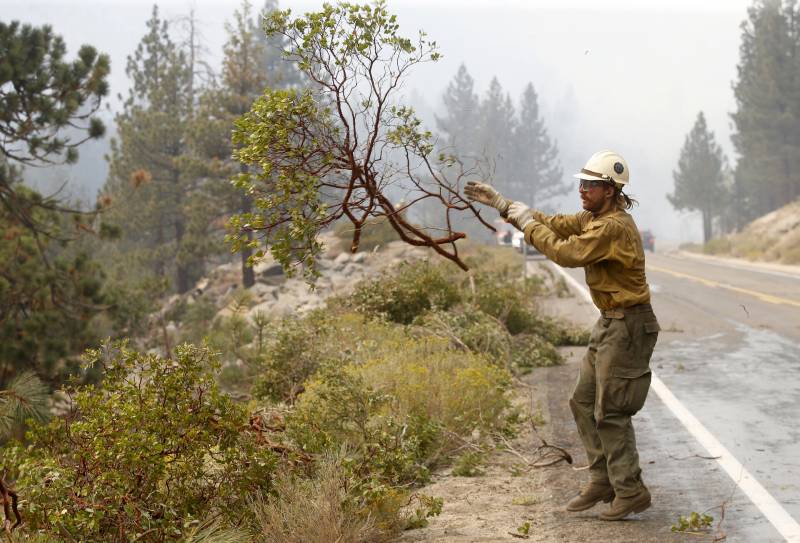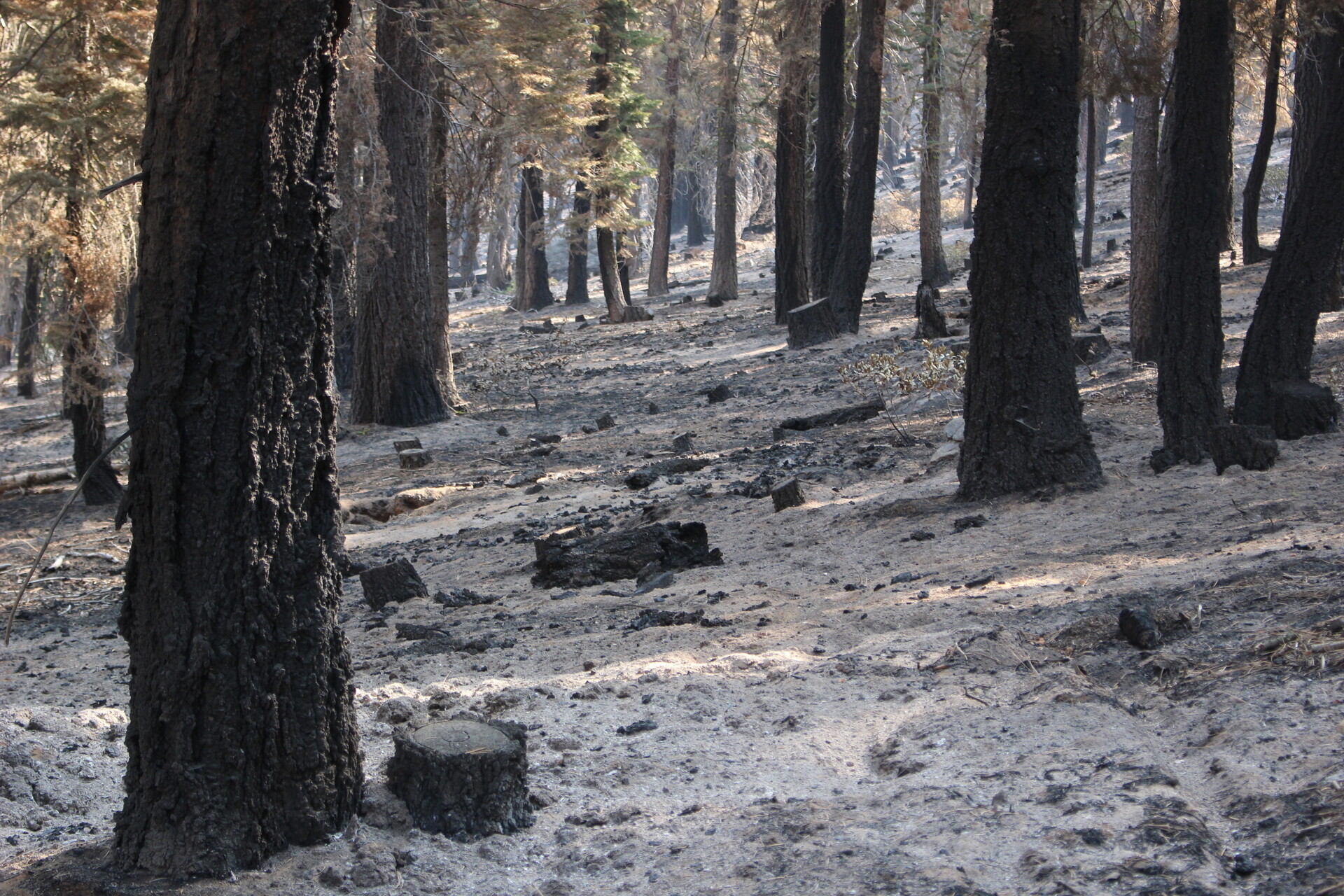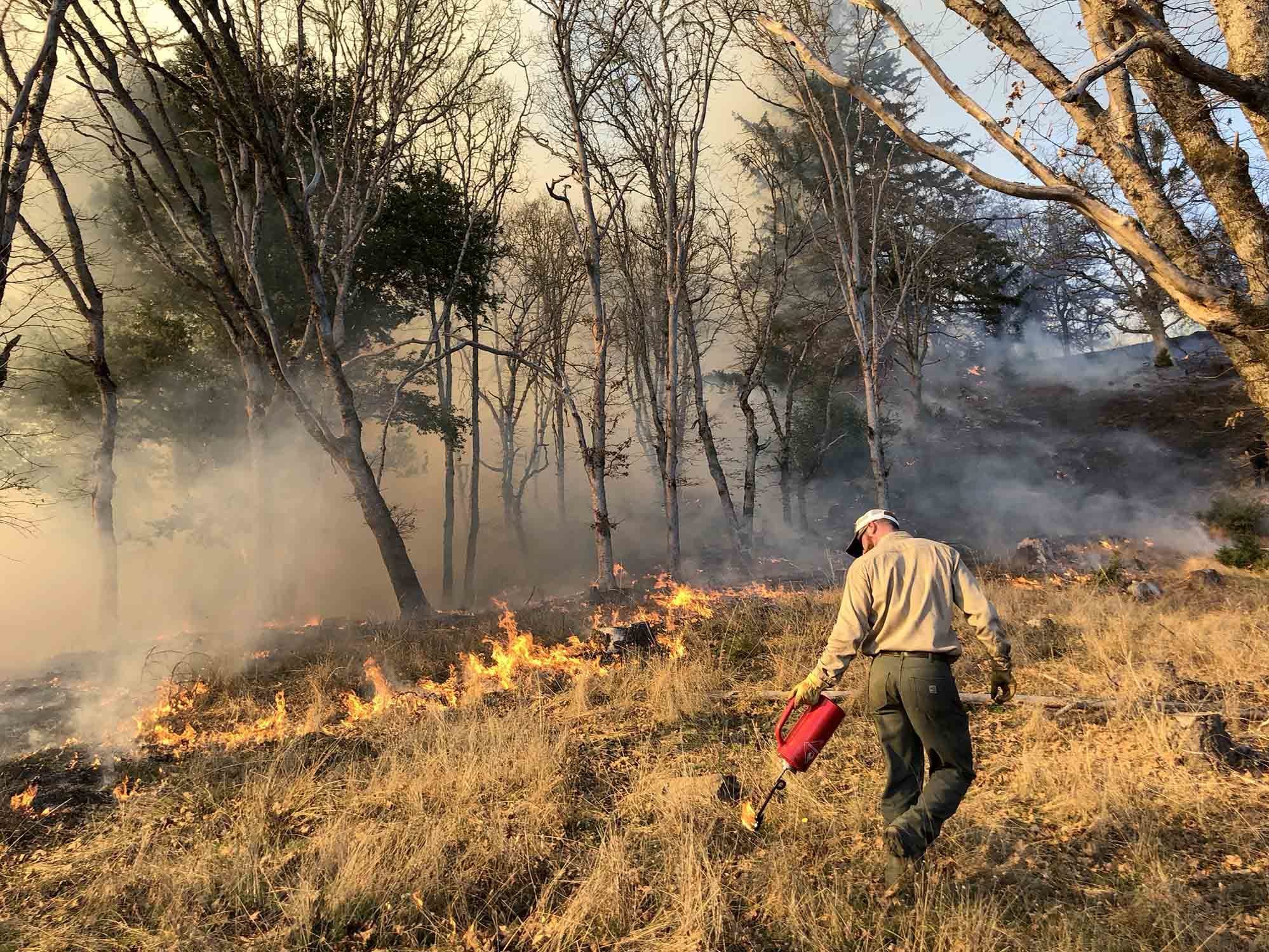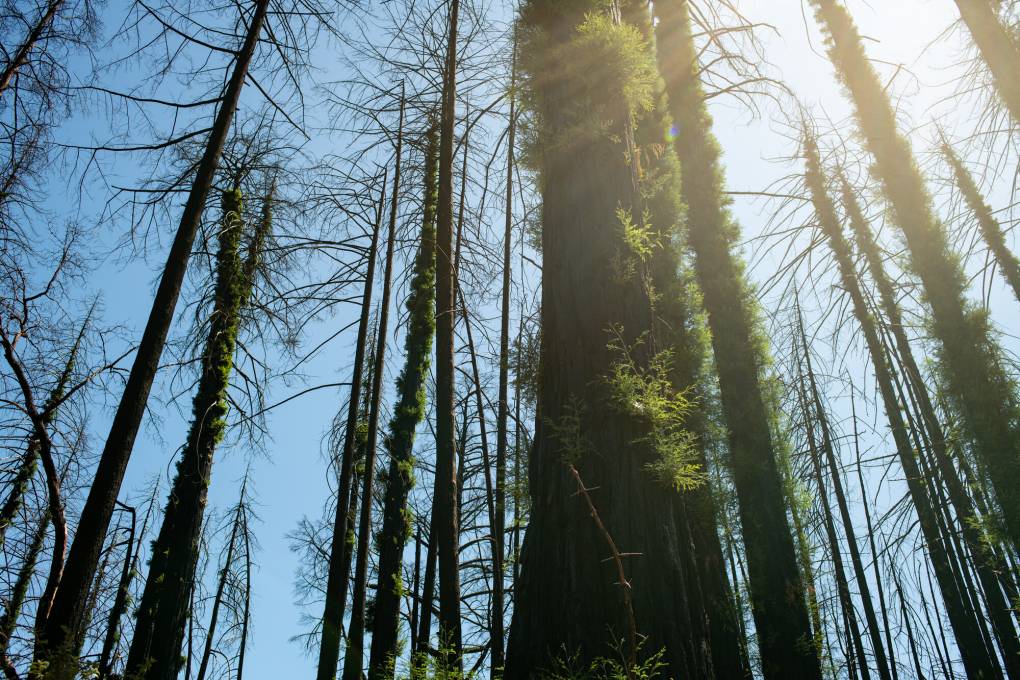[Jan. 10: This story was published in October. KQED followed up with more reporting on prescribed burns and why they likely would not have prevented January’s wildfires in Los Angeles.]
This week, the U.S. Forest Service directed its employees in California to stop prescribed burning “for the foreseeable future,” a directive that officials said is meant to preserve staff and equipment to fight wildfires if needed.
The pause comes amid the crucial fall window for planned, controlled burns, which remove fuel and can protect homes from future wildfires — raising concerns that the move will increase long-term fire risks.
“There are two times in the year when it’s safe to do prescribed fire: in the fall right before the rains come, and in the spring when things are dry enough to burn but not dry enough to burn it in a dangerous way,” said Michael Wara, energy and climate expert at Stanford University. He worries half of the prescribed fire season on federal lands will be sacrificed because of this decision.
“There is a risk aversion here that’s really damaging. The reality is, if there are mistakes on prescribed fires, people are likely to face consequences, even when those mistakes turn out to be positive,” Wara said.




